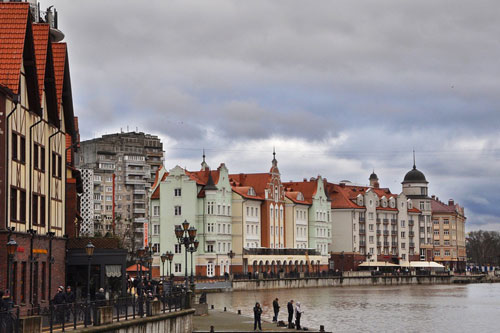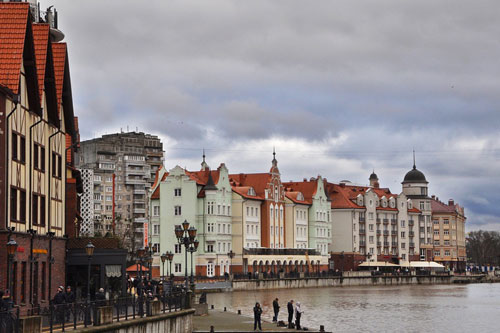The Russian exclave of Kaliningrad on the Baltic Sea is sandwiched between Poland to the south and Lithuania to the north and east.
A little parcel of land smaller than Wales nests along the Baltic Sea, Kaliningrad has no common border with Russia, which is almost 300 miles to the east – and unlike most Russians, its residents travel frequently to the EU. The city centre is 75 miles from the Lithuanian border, and a mere 30 miles from Poland.
Founded by Teutonic knights in the 13th century, it was previously known as Königsberg, the capital of East Prussia, where Prussian kings were crowned.
The region was part of Germany until annexation by the USSR following World War II when it saw bitter fighting and suffered extensive destruction. The German population was expelled or fled after the war ended.
During the Soviet period, Kaliningrad Region, administratively part of the Russian Federation, was separated from the rest of Russia, more than 300km to the east, by the then Soviet republics of Lithuania, Latvia, and Belarus.

Kaliningrad is full of exciting museums and historical buildings. Kant Island (formerly known as Kneiphof) is the perfect place to start your trip around Kaliningrad. One of the first settlements at the foot of Königsberg Castle was established here. The philosopher Immanuel Kant spent all his life in the city and died there in 1804. At the Königsberg University, he taught logic, ethics, metaphysics, mathematics, mechanics, natural science, and geography. At the same time, Kant wrote several works and essays on his theory of knowledge, ethics, anthropology, religion and political philosophy. Besides his enlightened mind, Kant is also known for his discipline and pedantry: he was literally the man to synchronize your watch with. And he never left his hometown of Königsberg.
One of the oldest buildings of the city dated back to 14th century is The Königsberg Cathedral. It is the most significant preserved building of the former City of Königsberg, which was largely destroyed in World War II. The Cathedral represents the tradition of Hanseatic (red-brick) Gothic style architecture originating in Germany and Poland and rarely seen in Russia.
The Museum of the World's Oceans is located on the former research vessel Vityaz on the shore of the Pregel river. The museum displays the newest technologies on sea research and also shows the diversity of the flora and fauna of the world's oceans.
For contemporary art lovers, Kaliningrad Art Gallery is the place to visit to enjoy the art of the 20th century as well as paintings, pieces of graphic art and sculpture by Soviet and Russian artists of the 1950s-1990s.
Another good way of spending time in Kaliningrad is walking through greens of Park Yunost or Central Park of Culture and Recreation. The Kaliningrad Central Park, or Kalinin Park as locals keep calling it, occupies the area formerly covered by Koenigsberg’s Luisenwall Park, named after the wife of one of the first proprietors of the estate.





